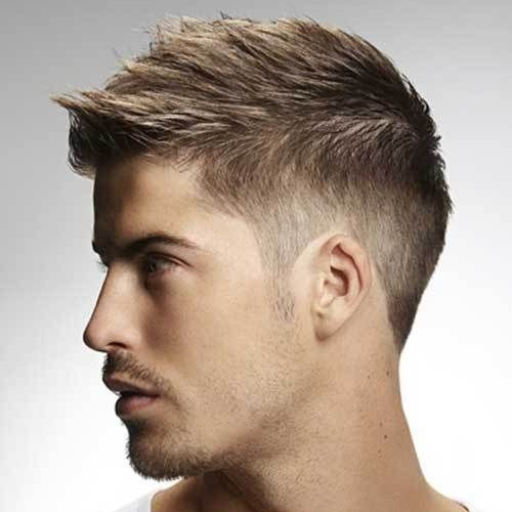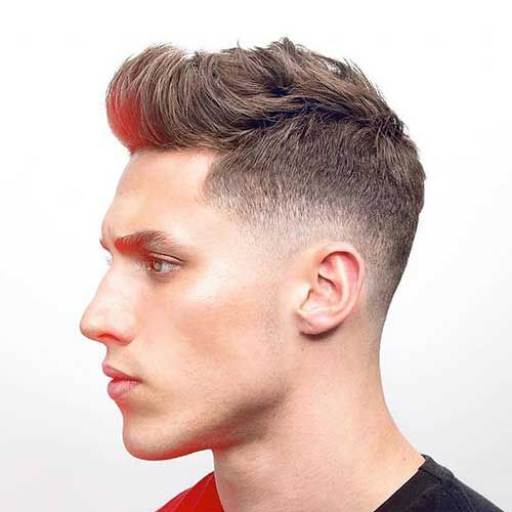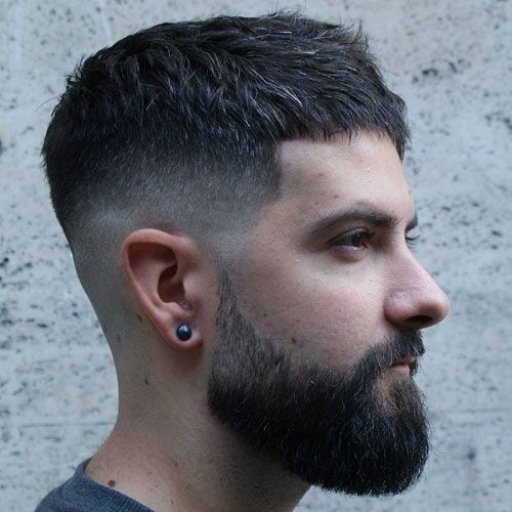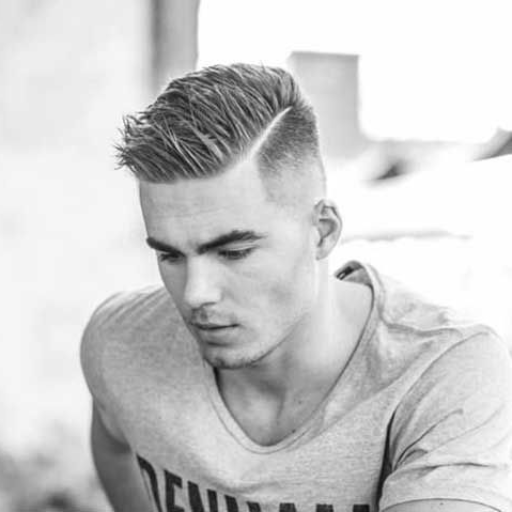Want to refresh your look? Consider changing your hairstyle to purple hair dye, which is ideal for achieving a colorful twist. Moreover, this blog will narrate your journey with this dyeing process step by step. It will provide the best method for adding shades of purple dye over brown hair, recommend products that guarantee satisfaction, and describe maintenance strategies necessary to retain color vibrancy for as long as possible. No matter if you’re going for a subtle plum undertone or a striking amethyst, this guide has something for everyone. Prepare to learn how the dye can completely transform your looks and self-esteem.
How to Choose the Right Purple Hair Dye for Your Dark Hair?
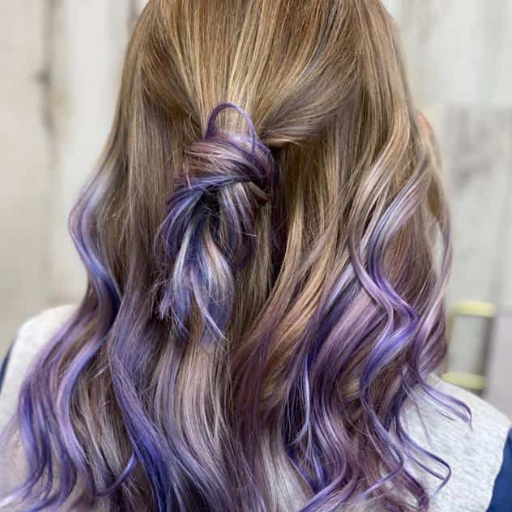
While choosing a purple dye for dark hair, ensure that the shade of choice aligns with your preferences, the amount of lightening needed, and the endurance of the dye. To achieve bold, bright purple, semi-permanent and permanent dyes, mixed with pre-lightening, will need to do the job, particularly for very dark hair. Alternatively, if a subtle look is desired, an unbleached dark dye will do the trick.
Make sure to check the label of the dyes for their ingredients and avoid harsh chemicals. Look for products that contain conditioners or oils to nourish and protect your hair. Make sure to check reviews and recommendations to confirm that the product provides vibrant and lasting results.
What Shade of Purple Should You Choose?
When contemplating dosages of purple, skin complexion as well as self-style, are indeed very important factors to consider. Someone with fair skin would be complemented by a pastel purr or lavender since they work quite beautifully together. Medium or olive skin is able to pull off rich shades such as plum or mauve, which add warmth. For Deep skin tones, one would match boldly with jewel purple like amethyst or violet, which serves striking contrast. If unsure, trying a semi-permanent dye first before surrendering is always wise. Also consider light, brightness, and maintenance fathom how potent purple can require upkeep to stave off exposure fading.
Is a Semi-Permanent or Permanent Hair Dye Better?
Your needs and preferences remain the most important factors to consider when deciding on semi-permanent or permanent hair dye. If you’d like to experiment with a new color, semi-permanent dye is the best option as it will wash out eventually over time with each wash. This type of dye is also less harsh because it uses no ammonia, and no developer is needed. Permanent dye, on the other hand, is best for those who wish to have long-lasting color or need to cover gray hair. It provides more durable results since it penetrates the hair shaft, but requires more upkeep as the roots will need regular touch-ups. As for me, I suggest starting with semi-permanent if you’re new to interpreting hair colors.
Understanding the purple dye over brown hair
Applying purple over brown hair. Understanding hair, or knowing what hair is and hair type, including its health, prior to applying any shade of dye, will determine the outcome. Some people who have dyed their hair in dark brown shades often find themselves with subtle hints of purple that shine when exposed to bright light. Unfortunately, those who seek vibrant or strong purple may require pre-lightening or bleaching of their hair to colloquially strip or remove color, to let the dye set. If you have medium brown hair, you may notice much stronger hues of purple stains without pre-lightening, because of the root color. Semi-permanent stains are mitigated by the long-lasting versions, while the aforementioned options bring freedom of alteration. Permanent seems to offer far harsher results without freedom of reversal without stretching. I recommend following the manufacturer of the dye guidelines and using them to instruct through induction.
Steps to Dye Your Purple Dye Over Brown Hair
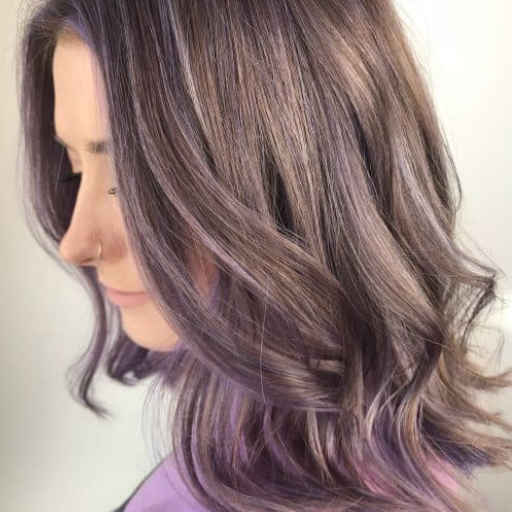
If you want to dye your brown hair purple, you need to first decide the type of dye you want to use – semi-permanent or permanent, which depends on the duration of color you want. If you have dark brown hair, you may need to bleach your hair first to achieve a more vibrant purple color. First, prepare your hair by washing it with a clarifying shampoo, then allow it to dry fully. Once your hair is dry, section it into manageable parts. Put on gloves, then mix the dye according to the manufacturer’s instructions. Starting from the roots, apply the dye evenly to the tips of your hair with a brush. Once you are done, follow the manufacturer’s instructions regarding the processing time. After rinsing with cool water to set the color, avoid using strong heat while styling to maintain the vibrancy of your purple hair. Always use color-safe shampoo.
Do You Need to Bleach Your Hair?
If you’re thinking of getting purple hair, whether you need to bleach it first depends on your hair color and what shade of purple you want. If you are looking for more vibrant and pastel shades of purple, then it is more likely that you would need to bleach your hair. However, if your hair is lighter or if you’re looking for richer purple, then bleaching may not be necessary. In my case, I assess the state of my hair and if those results need dredging, evaluate if it can withstand the bleaching process without immense damage. If there’s any doubt, a stylist is the safest bet.
Best Practices for Purple Dye Over Brown Hair at Home
- Choose The Right Dye
As per what I found, selecting the right type of dye is vital. For a subtle hint of purple on brown hair, semi-permanent dyes cut best, as no bleaching is needed. Arctic Fox and Manic Panic are some of the dyes I strongly promote since they’re vegan, cruelty-free, and not too harmful.
- Preparing Your Hair
Starting with clean, dry hair is critical. That means washing your hair 24-48 hours before dyeing it so that natural oils can help protect your scalp during the dyeing process. Never use conditioner shortly before applying the dye because it will act as a barrier.
- Strand Test First
Testing dye on small sections of hair works out because you determine how well it will work with your hair and if you will have any allergic reactions.
- Apply the Dye
When applying hair dye, make sure to section it into parts so you paint the color evenly, wear gloves to avoid personal mess and thoroughly work the dye into the strands following the instructions on the package.
- Double Up
In my experience, placing a shower cap over a dyed head is not only convenient but also aids in enhancing the purple tones after use.
- Rinse and Maintain
A strong wind or warm air will bring out the color when rinsing so cold water is recommended, especially with shampoos. To keep the vibrant, you must steer clear of coloring with sulfates.
Throughout the years, these techniques have proven to yield effective results while also maintaining my hair in good condition.
How to Apply Purple Hair Dye Evenly
For uniform application of purple hair dye, I make sure to subdivide my hair into small sections so that every part of the hair gets the dye. I apply the dye using a brush, starting from the roots to the tips, systematically working my way through the parts. I ensure complete strand saturation to prevent any patchy places. Afterward, I use a wide-toothed comb to gently comb through the hair to the scalp to evenly distribute the dye. I also check that no area is left uncolored. For consistent results, I cover my hair with a shower cap and adhere to the recommended processing time. This method always ensures excellent results in terms of even and vibrant color.
Maintaining Your Purple Hair and Keeping It Vibrant
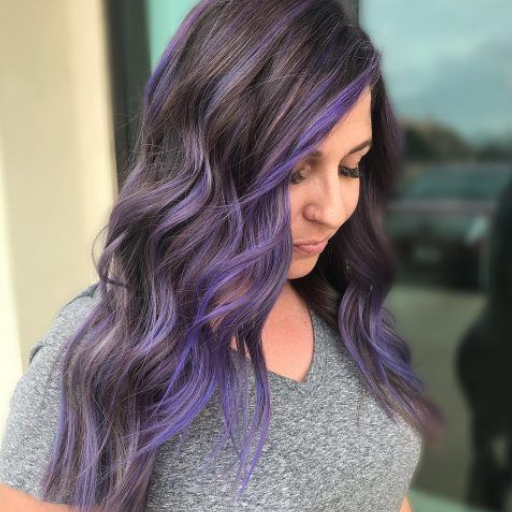
To keep your purple hair vibrant, start with a sulfate-free shampoo and conditioner formulated for color-treated hair, as they are more gentle and aid in maintaining vibrancy. Avoid using hot water when washing your hair, as it leads to quicker color loss; instead, use cool water to keep it fresher for longer. Add a color-depositing conditioner or hair mask to your haircare routine to help maintain the color between applications. Protect your hair from the sun’s harmful rays that may cause fading by wearing a hat or using UV protective hair spray. Lastly, avoid heated styling tools or use a heat protectant, so your hair suffers less damage and maintains your vivid purple locks.
How Often Should You Wash Purple Hair?
Based on my personal experience, maintaining the vibrancy of purple hair works best with washing it two to three times a week. If you don’t keep up with coloring, there are color-safe shampoos to assist in maintaining your desired color. If you don’t wash consistently, the dye will fade more quickly. In that case, using a sulfate-free shampoo along with a conditioner is ideal. In addition to washes, a dry shampoo can hold you over to maintain styling without extra washes and preserve the style longer. Last but not least, always rinse with cool water to lock in color, and don’t forget to follow with a color-depositing conditioner to ensure the hair stays nourished and radiant.
Recommended Shampoos and Conditioners for Dyed Hair
Maintaining my hair’s color requires me to use very specific shampoos and conditioners, especially ones meant for color-treated hair. They must be sulfate-free, as I need something that cleans gently without damaging the color. Pureology Hydrate Shampoo and Conditioner is one of my favorites because it keeps my hair color and also makes my hair feel soft and nourished. If you need to brighten up your purple shade, a purple shampoo like Fanola No Yellow Shampoo does an amazing job at toning and refreshing the color. For shine, I recommend the deep conditioning treatment Olaplex No. 5 Bond Maintenance Conditioner once a week. These products help me look after my hair to ensure it continues to look vibrant, healthy, and lively.
How to Prevent Fade and Keep the Color Fresh
In keeping my hair dye fresh and preventing a fade, I tend to follow a few steps. To start with, I do not wash my hair too often since washing it too frequently will remove the color. When I do wash, it is with color-safe and sulfate-free shampoos as well as lukewarm water to scrub less. In addition, I do put a leave-in conditioner with sunblock since the UV rays from the sun can also contribute to hair color fading. To keep the vibrancy, I refresh my color at mid-month using a color-depositing mask or gloss that matches my shade between salon appointments. Finally, I use a styling heat protectant to avoid damaging my hair with heat. In this way, I help sustain how my hair looks for weeks after coloring it.
What to Do if You Want to Revert to Brown Hair

Going back to brown hair after coloring it requires using a professional stylist to ensure that the process is not damaging to your hair. Initially, it is advised to book a consultation with a stylist to evaluate the existing hair color and condition. Depending on the evaluation, the stylist may perform a color-correcting treatment to get rid of unwanted tan hues, or they may choose to apply fillers to restore warmth that has been masked by past coloring. When your hair has been prepped, it is now safe to apply the desired brown shade, making sure to match the natural undertones of your hair. If doing this at home, ensure that a semi-permanent or demi-permanent hair dye is used. The hair will need to be quenched with a deep conditioning treatment after the process to stabilize its health.
How to Use Brown Dye Over Purple
In order to put a brown dye over purple hair, I would first evaluate what I have in my crown and which undertones it has. If the purple is too bright, I might have to neutralize it using some form of color correction, adding things like a green or yellow toner to do the job. Once my hair is prepared, I need to select a brown dye which works with my skin—warmer browns balance after purple dyeing. If I am doing the dyeing myself, I would go with demi or semi permanent and do a strand test first. Along with these steps, I have to replace my regular shampoo with a nourishing treatment one to preserve the hair color. Being patient and taking proper steps after dying are essential to maintaining a good result.
Steps for Removing Purple Dye from Hair
To get purple dye out of my hair, the first step would be using a clarifying shampoo that strips some of the color over a few washes. If that doesn’t work, I’d try a Vitamin C treatment by combining crushed tablets with shampoo and letting it sit for around 20 minutes. For the deeper removal, I’d keep the option of using a color remover, provided I follow the steps to prevent damage. Throughout the process, I’d make sure my hair was well-kept by adding some deep conditioning between attempts and after each step. The most important aspect is taking my time when removing the purple dye in order to keep the health and integrity of my hair.
Choosing the Right Brown Dye for a Natural Look
In order to pick the best brown dye for a natural appearance, I personally begin by identifying my skin’s undertone- whether it is warm, cool, or neutral. Skin type greatly impacts the hue selection. Warm undertones work with browns infused with gold or caramel, while cooler tones work better with mocha or ash browns. Starting hair color is another factor as jumping two shades darker or lighter will need extra processes like toning or pre-lightening. For easy and adaptable looks, it’s best to go with dyes that say “natural” or “neutral brown.” Lastly, I’d always do a strand test before applying the product for testing on value changes to avoid alterations.
Common Issues and Solutions with Purple Hair Dye

Purple hair dye may sometimes fade fast on porous or previously lightened hair. Cool water sulfate-free shampoos can be used to combat this issue. Another concern with the use of hair dye is uneven color application, which stems from improper prep work. Make sure the hair is clean and the dyeing processes are done in stages to ensure uniform results. Staining of the scalp or skin edges is another issue that many dye users face. Wearing gloves during application and rubbing petroleum jelly along the hairline solves this easily. If the results appear too dark or bright, they can be toned down with clarifying shampoo. Lastly, in between dyeing sessions, using a color-depositing conditioner helps maintain vibrancy and freshness. For optimal results, consider recommending it to clients.
Dealing with Uneven Color or Patches
When trying to fix any kind of color patches, I believe finding the root causes and fixing them first yields the best results. To start off, ensure that the hair is clean prior to dyeing it with any color; any leftover products, incorrect hair porosity, or inconsistent application may lead to uneven coloring. To rectify the issue of uneven hair color, try reapplying the color correction treatment or redye only the affected spots with the same formula. If the patches are still too visible, consider gently toning them to a closer shade of your desired result using a semi-permanent dye. In most circumstances, taking the time to section the hair properly and distribute color evenly will greatly reduce the chance of this occurring during future coloring sessions.
How to Fix Dark Purple Hair That Is Too Darker Than Expected
Don’t worry if your dark purple hair appears overly dark; there are a few adjustments that can be made. To start, consider trying to wash your hair with clarifying shampoo as a gentle way to fade the color. If that is not enough, you can further the alteration by mixing clarifying shampoo with baking soda or dish soap for a color-removing mixture. Apply the mixture to your hair and rinse thoroughly. You must perform deep conditioning to avoid the hair becoming dry. Using any of these methods will ensure that the purple color is lightened. You can also lightly darken the purple dye by adding a lighter shade of purple semi-permanent dye mixed with conditioner before applying it to the hair. This will help soften the darkness. Be sure to do a strand test first to ensure the outcome is what you want.
Addressing Allergic Reactions or Scalp Sensitivity
In case of allergy or scalp sensitivity from hair dye, it’s important to take quick action. First, rinse your scalp with cool water in order to remove the dye. During this process, do not use any strong shampoos as they will cause more irritation. Itching and inflammation can be assuaged with antihistamines or hydrocortisone cream, but seek medical attention if the allergic reaction continues or escalates. To avoid further complications, remember to perform a patch test 48 hours ahead of time before trying out a new hair dye. The same goes for the hair dye itself; opting for ammonia-free, PPD-free, or hypoallergenic dyes is a safer bet. Above everything, your security and comfort are what matter, especially when changing up hair colors.
References
-
Microencapsulated Myrciaria cauliflora Berg. fruit peel extract as a natural pigment for neutralizing shampoo preparation
This study explores the use of natural pigments, such as anthocyanins, responsible for purple pigmentation. It discusses the formulation of products with purple hues and their application in hair care. -
Formulation and Evaluation of Herbal Hair Dye
This paper evaluates the use of natural compounds, including anthocyanins and flavonoids, for hair dyeing. It highlights the potential of herbal ingredients to achieve vibrant colors like purple while maintaining hair health. -
Alternative application approach on black bean: hair coloring product
This research investigates the use of black bean extract for hair coloring, emphasizing its economic feasibility and dyeing efficacy. While focusing on red-brown tones, it provides insights into natural dye applications and methodologies.
Frequently Asked Questions (FAQ)
Q: Can I dye my hair from purple to dark brown without bleaching?
A: Yes, you can dye your hair from purple to dark brown without bleaching, especially if the purple is not too dark. Using a high-quality box dye designed for dark hair can help cover the purple effectively.
Q: What should I consider when choosing a hair dye for dark hair?
A: When choosing a hair dye for dark hair, consider the shade you want to achieve, whether you need a permanent or semi-permanent dye, and if you prefer a vegan formula. It’s also important to think about the condition of your hair and whether it needs pre-treatment.
Q: How effective is box dye for transitioning from purple to brown hair?
A: Box dye can be effective for transitioning from purple to brown hair, especially if the purple is faded. Choose a shade that matches or is slightly darker than your desired brown color to ensure full coverage.
Q: Are there any specific tips for going from dyed purple hair to light brown?
A: Going from dyed purple hair to light brown can be challenging without prelightening. If you want to achieve a light brown, you may need to gradually lighten your hair or consult a hairdresser for advice on color theory and achieving an even tone.
Q: Can I achieve a natural brown color from deep purple hair dye?
A: Achieving a natural brown color from deep purple hair dye might require multiple steps, including removing the purple tones and then applying a brown dye. Using a direct dye remover can help eliminate some of the purple before applying the brown color.
Q: What are the risks of dying my hair brown from purple without a hairdresser?
A: Dying your hair brown from purple without a hairdresser can result in uneven color, breakage, or damage if not done properly. It’s advisable to do a strand test first and use a clarifying shampoo before dying to ensure the best results.



